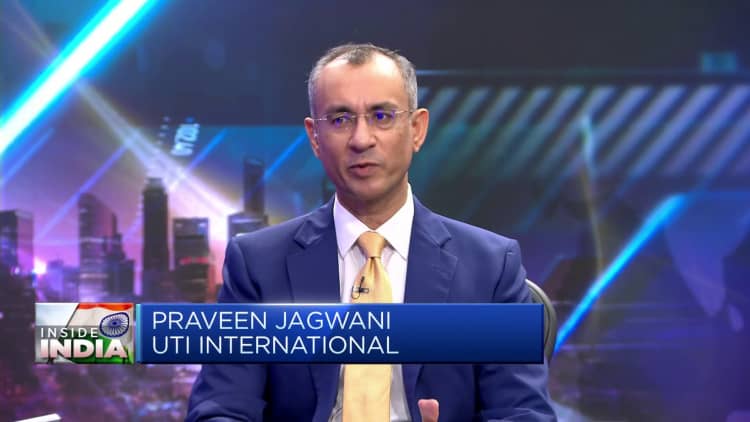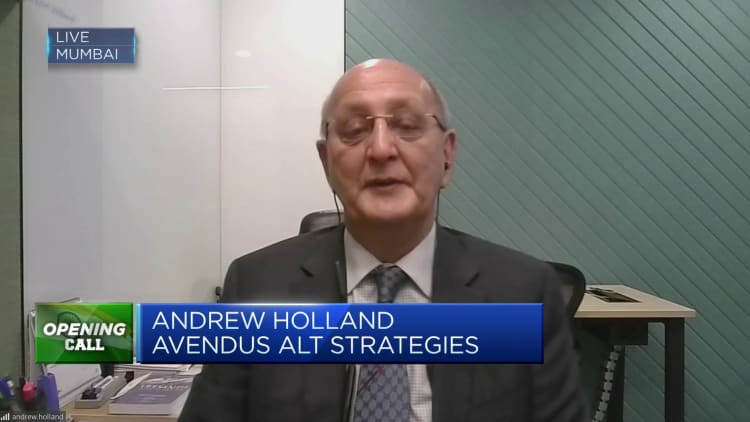Indian equity benchmarks the Nifty 50 and BSE Sensex have rallied by more than 6% since the state elections.
Sopa Images | Lightrocket | Getty Images
The Indian stock markets rallied to new highs in 2023 on the back of bullish investors and stronger domestic participation. But analysts warn that the level of optimism seen last year will not be replicated before the general election concludes.
Indian equity benchmarks the Nifty 50 and BSE Sensex have rallied by more than 6% since the state elections concluded in the first week of December with Prime Minister Narendra Modi’s Bharatiya Janata party winning three of four states.
Both the Nifty and Sensex hit record highs of 22,081.95 and 73,000, respectively, during Asia’s Monday afternoon trading session.
The country is set to hold its general election between April and May.
“The BJP victory has already been priced in at this point. There were many question marks around the party’s victory before the state elections, but a lot of that has gone away,” Peeyush Mittal, portfolio manager at Matthews Asia said.
The stock markets have factored in “a lot of positives” and investors might only see a single-digit return of 3%-5% before the election kicks off, Mittal told CNBC in a phone interview.
In the past five general elections, Indian markets have climbed an average 18% six months prior, 8% three months before, 2% in the months after the results, and 10% half a year later, said Shantanu Bhargava, managing director and head of listed investments at Waterfield Advisors.
“If you were to compare it with the historical average, a lot of returns have already been discounted … and the victory of the current government is already discounted in the market,” he said, adding that the markets have been “priced to perfection.”
The next rally
So when could investors see another big rally in the Indian markets?
Analysts believe that will only happen when the Reserve Bank of India cuts interest rates, which is likely in the second half of the year.
“If [the RBI] believes that inflation is going to go down durably, then we might see some action in the second half of this calendar year, but it is also completely dependent on the trajectory of consumer price inflation in India,” Waterfield Advisors’ Bhargava said.
Inflation in the South-Asian country stood at 5.5% in November, and Reuters poll foresees it coming at 5.7% in December — still higher than the central bank’s 4% target.

A “harder rally” may come about if the narrative around interest rates becomes more “benign,” and rate cuts from the U.S. Federal Reserve and the RBI happen,” Mittal pointed out.
Higher investments into India
The confidence in the economy will also boost investments into the country.
India’s largest automaker, Maruti Suzuki, announced Wednesday that it would invest $4.2 billion to build a second factory in the country. Vietnamese electric auto maker VinFast said earlier this week it aims to spend around $2 billion to set up a factory in India as well.
The southern Indian state of Tamil Nadu has confirmed that Apple suppliers such as Tata Electronics and Pegatron, have plans to invest more than $4.4 billion in the state, as the iPhone maker strives to diversify supply-chain away from China.

Andrew Holland, CEO of Avendus Capital Alternate Strategies, told CNBC’s “Street Signs Asia” last week that he expects $100 billion in inflows to India this year, especially as the country is set to be included in J.P. Morgan’s Government Bond Index-Emerging Markets index in June.
According to India’s National Investment Promotion and Facilitation Agency, the country received $71 billion in foreign direct investments in its last financial year which ended March 2023.
India, however, still has ways to go in its infrastructure to show the world it can handle all the interest that is coming its way.
“The poverty you witness straight out of the Bombay or Delhi airport prevents people from having a high conviction bet,” said Praveen Jagwani, CEO of UTI International.
Sectors to watch
Analysts that spoke to CNBC agreed that Indian markets are currently overvalued, but there are still sectors that hold promise.
“There’s a tremendous financialization of savings in the country away from physical assets into more financial assets,” said Matthew Asia’s Mittal.
While “pockets of the market” are fully valued, financials and consumer staples are still undervalued sectors that are poised to do well this year, said Ramiz Chelat, portfolio manager at Vontobel Asset Management.
“Financials could potentially do well given that it’s relatively cheap, is generating good growth and has lagged the broader rally,” Chelat told CNBC in a Zoom interview. “And if you see consumption picking up in the rural markets, consumer names that have somewhat lagged could also rally.”
A HDFC Bank branch in Mumbai, India, on Friday, April 14, 2023.
Bloomberg | Bloomberg | Getty Images
Among financial companies, Chelat prefers HDFC Bank, as its merger with India’s biggest mortgage lender Housing Development Finance Corporation has increased the lender’s mortgage penetration. “It’s at the cheapest it’s been for a number of years now,” he adds.
In the consumer space, Chelat said Eicher Motors is a name that “continues to exceed expectations” as it has a good runway both domestically and in the export markets.
“They have seen very good growth in the festive season which indicates competition in the two wheeler premium segment has grown.”
Credit: Source link










